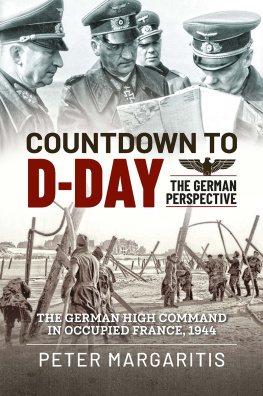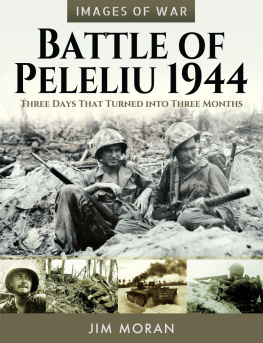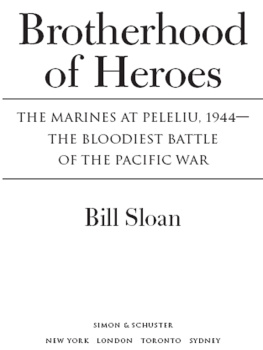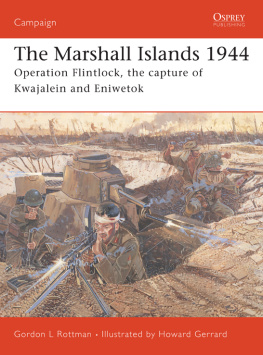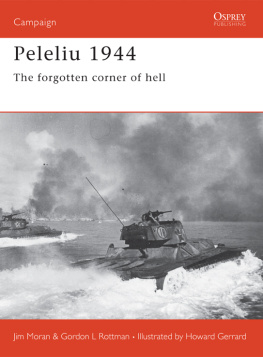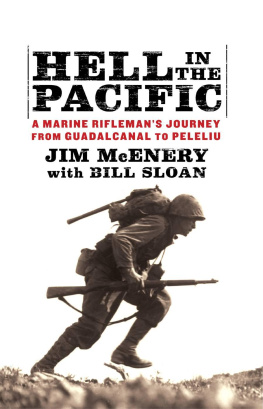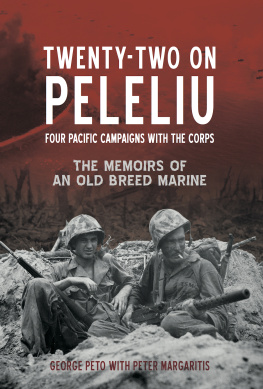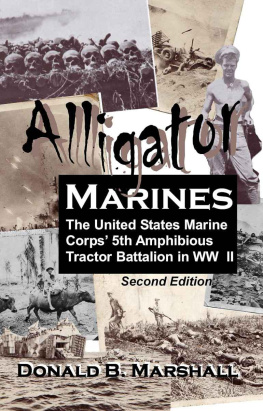Published in the United States of America and Great Britain in 2018 by
CASEMATE PUBLISHERS
1950 Lawrence Road, Havertown, PA 19083, USA
and
The Old Music Hall, 106108 Cowley Road, Oxford OX4 1JE, UK
Copyright Peter Margaritis, 2018
Hardback Edition: ISBN 978-1-61200-645-1
Digital Edition: ISBN 978-1-61200-646-8 (ePub)
eISBN 978-1-61200-646-8
Mobi ISBN 978-1-61200-646-8
A CIP record for this book is available from the British Library
All rights reserved. No part of this book may be reproduced or transmitted in any form or by any means, electronic or mechanical including photocopying, recording or by any information storage and retrieval system, without permission from the publisher in writing.
For a complete list of Casemate titles, please contact:
CASEMATE PUBLISHERS (US)
Telephone (610) 853-9131
Fax (610) 853-9146
Email:
www.casematepublishers.com
CASEMATE PUBLISHERS (UK)
Telephone (01865) 241249
Fax (01865) 794449
Email:
www.casematepublishers.co.uk
Front cover: Men of the US 1st Marine Division fighting just beyond White Beach, Peleliu,
15 September 1944. (U.S. Marine corps photo)
Back cover: Landing craft (U.S. Marine corps photo) and First Marine Division patch.
Contents
List of Illustrations
Preface
Introduction
1Target: Peleliu
2Planning
3Invasion
4Analysis
5After the Battle
Conclusion
Bibliography
This book is dedicated to the memory of my good friend, Sergeant George Peto,
USMC, one of the Old Breed, who went ashore in the first wave at Peleliu
with the Third Battalion, 1st Marines, and who over seventy years later,
collaborated closely with me on the original essay from which this book
has been written.
List of Illustrations
The Palau Islands.
The Pacific theater of operations, 1944.
Admiral Chester W. Nimitz.
General Douglas MacArthur.
Strategic conference in Hawaii, evening, July 26, 1944.
Planned invasion of Peleliu.
Major General Roy Geiger.
Major General William Rupertus.
First Marine Division chain of command for Peleliu.
Colonel Lewis Chesty Puller.
Colonel Herman Hard-Headed Hanneken.
Colonel Harold Bucky Harris.
General Oliver Prince (O. P.) Smith.
Naval order of battle for the Peleliu campaign.
Sea of mud.
Admiral William Bull Halsey Jr.
Rear Admiral Jesse B. Oldendorf.
Naval gunfire support in action.
D-Day, on Peleliu, September 15, 1944, looking north-northeast.
D-Day, approaching the shore.
D-Day, Beach White-2.
D-Day, Beach Orange-1.
Japanese coral pillbox.
The struggle for The Point.
Voice call log of the USS Honolulu, afternoon of D-Day.
Counterattack repulsed.
Marine tanks advancing on the airfield, D-Day.
Beachhead buildup.
The Marines struggle inland: September 16 through 30.
Wounded Marine.
Dead Mans Curve.
The Umurbrogol Pocket.
General Paul Mueller.
Aerial recon photo of Peleliu.
Estimated ship shell expenditures at Peleliu.
Estimated total preliminary bombardment expenditures at Peleliu.
The SR-536 walkie-talkie.
An LST loaded with supplies.
The T20 shoulder-fired mortar.
Preface
As a writer of military history, I became aware in the spring of 2015 of an annual essay contest that was sponsored by the U.S. Naval Institute. That years contest carried a first prize of $5,000. The essay could be no more than 3,000 words, and the topic was to be on some noteworthy U.S. Marine Corps event that had made a significant impact in American history. Having researched and written most of my career on either the American Civil War or the European Theater in World War II, I realized that writing about Marines would be a challenge. This would be a new avenue of historical investigation for me.
Unsure of what subject to write about, I consulted with a few of my American Legion cohorts who were Marine veterans. Their consensus was that I write about the controversial invasion of Peleliu that had taken place in September, 1944. They felt that the Marines that had landed had been needlessly wasted in that bloody operation, and that their story had never adequately been told. A Navy buddy of mine suggested that if I were to decide to write about Peleliu, that I should consult with an old World War II Marine veteran, one who lived relatively near me in central Ohio and who had been there. His name was George Peto. He was one of what they called the Old Breed and had actually participated in the Peleliu operation.
George and I first met on June 24, 2015 in a Bob Evans restaurant to discuss the idea. We immediately took a liking to each other, and I invited him to assist me with the essay. We felt that we would make a good team, since I was an experienced writer and researcher, and George had not only been there with the first wave, but had a remarkable memory about what he had experienced.
Our essay unfortunately did not win the contest, so George and I decided to expand our work and turn what we had written into a book. During the course of our endeavor though, as this exceptional old man told me more about his past, I listened, fascinated, marveling at his consistent, detailed memory of extraordinary things that had happened to him many decades ago. At last, I realized that a much better book to write would be about his life. I wanted toI had towrite about him, to preserve his memories for everyone, especially his daughter Nancy, his son George Lee, and his friends. He good-naturedly agreed, and so we were off.
The result was an incredible story about a remarkable Marine. Published in late July, 2017 and entitled Twenty-Two on Peleliu, it detailed Georges exploits, from a young boy growing up in the backwoods of southern Akron, Ohio, to the hot dry plains of Utah, working on soil conservation projects with the Civilian Conservation Corps, to his exploits as a Marine, and his life after the war. It follows his early career in the Marines, to the jungles of the Pacific in intensive Pacific campaigns, to his life back in Ohio.
I truly enjoyed co-writing about his exciting life, while at the same time, I was able to gather so much information from him and from our research about war in the Pacific. Unfortunately, just after our first draft was finished, George passed away. I had vowed to see the book published, and so I continued on, finishing the book, and securing a publisher.
As I awaited the books release though, a nagging thought kept popping up in my mind. I had never followed through on our original project. I knew from my investigations and from my experiences with Mr. Peto exactly how brutal the Peleliu operation had been for the First Marine Division. And my research had uncovered a whole myriad of accounts that were either not true, imprecise, or never really studied. One such controversy, for instance, centered on the U.S. Navys third and last day of intensive, pre-invasion bombardment. Some accounts claimed that it never happened. A few claim that it did, and was quite effective in achieving its objectives. I eventually discovered that the truth was somewhere in the middle.


